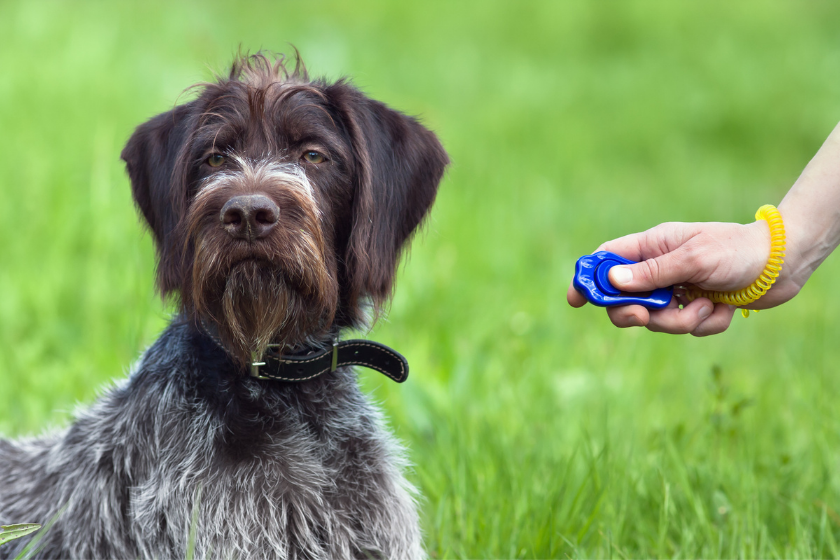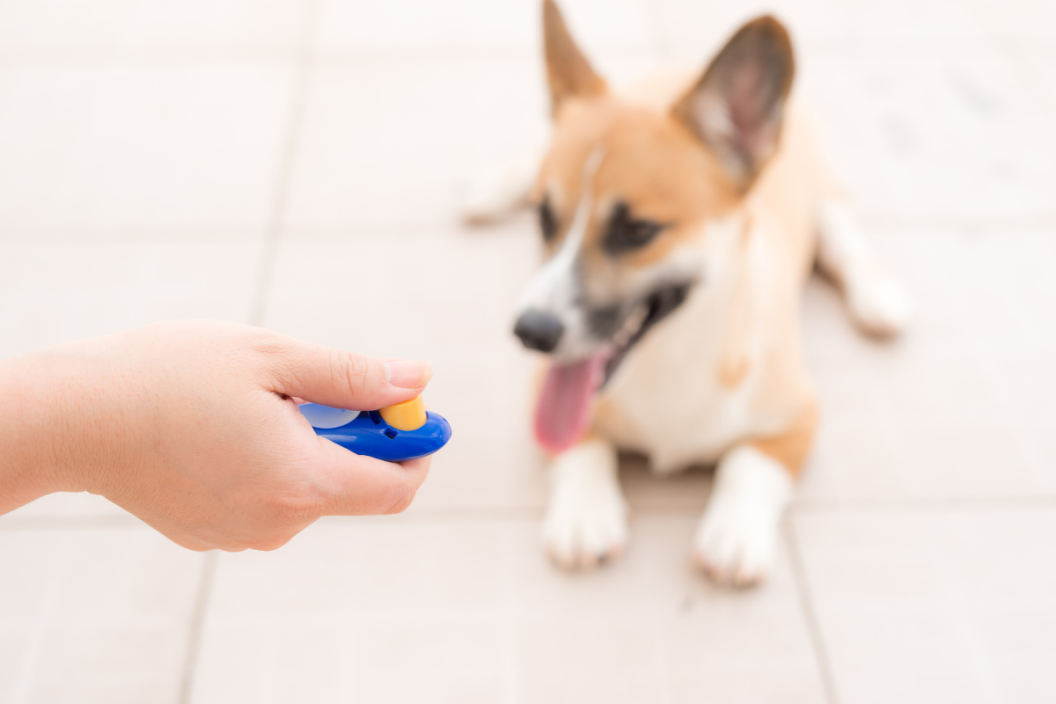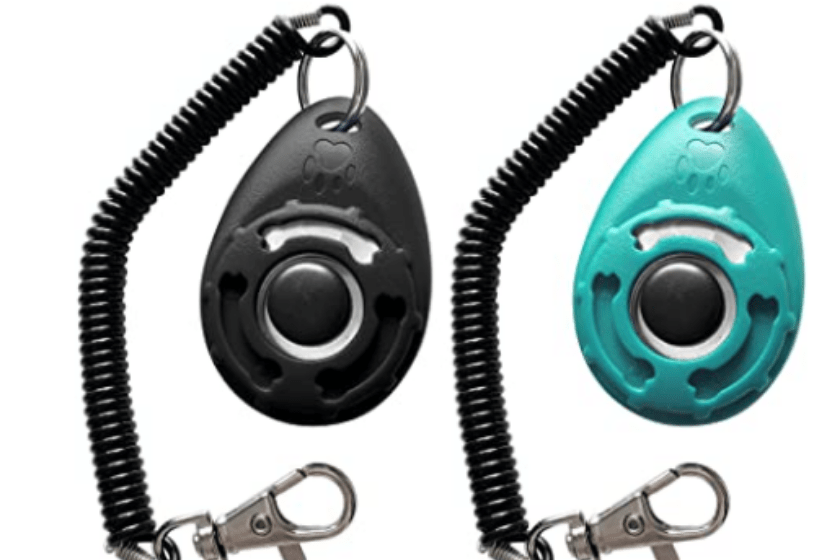Clicker training for dogs is popular with trainers, but does it work?
Clicker training utilizes a device emitting a unique sound that your pup associates with good behavior. It is often a clicking sound, followed by a treat for positive reinforcement. Though, you can choose any sound that is not easily found in your dog's environment.
A clicker can be purchased online at Amazon or another online retailer. Dog trainers press the button on the clicker and immediately reward with a dog treat, so the positive association is formed. However, it takes regular repetitions for your pup to begin to make the association when you start clicker training. New behaviors always take a little while for your dog to get used to. According to the American Kennel Club, it takes anywhere from 10-20 repetitions before your dog knows that a food reward will be coming right after the clicker sound.
Once you get your dog used to the sound and treat routine, you are ready to start with basic commands. However, just like the eight other types of dog training, using a clicker has its pros and cons.
Pros of Clicker Training

1. Uses Positive Reinforcement
Clicker training relies on the part of operant conditioning called positive reinforcement. This training technique rewards your pet for performing the desired behavior. When you use clicker training, the environment is incredibly positive and fosters a respectful relationship between you and your pup.
If your dog responds well to praise, which most pups do, they will be even more willing to learn new tricks.
2. All Family Members Can Do It
Every family member can use clicker trainers. As long as the click comes at the exact moment your dog does the desired command and is quickly followed by a treat, it should not matter if you, your partner, or even your kids hold the clicker as long as the pattern is consistent.
3. No Miscommunication
Sometimes your tone of voice or overall body language can get in the way of training. Using a clicker erases any potential for miscommunication with your pup. They cannot read into your tone or the tone of someone else training them with a clicker.
4. Can Use With A Marker Word
While using the clicker, a treat is an essential part of training sessions. You can also use your voice or a whistle. Some pups may be afraid of the clicking sound due to past trauma or noise aversions. Instead, you can whistle and give your pup a treat when they exhibit a particular behavior, or you can say the word "yes" followed by giving them a treat. This also works if you want to transition away from using the clicker with your new puppy.
5. You Can Use It Anywhere
The nice thing about clicker training is it's not a long-drawn-out, step-by-step process that requires the perfect environment. Instead, clicker training can be easily done anywhere. Take the clicker on walks, to the park, or even to a friend's house. Just make sure you keep the pattern the same and immediately reward with a treat! Positive reinforcement training methods only work with consistency.
Cons of Clicker Training

1. Dog May Not Respond To The Sound
Your dog may not be fond of the clicking sound. Some dogs, especially rescues or strays, may have an aversion to different pitches, including clicking, if it reminds them of something negative. One training tip is not to point the clicker at your pup. They may think that it is bad. Instead, hold the clicker at your side when you use it. If that still does not work for your pup, you can try a softer clicker or a different training method.
2. Treats or Kibble Can Get Expensive
Though dog owners like to spoil their pups with the best dog food or treats, using them constantly for clicker training can start to add up. Start clicker training on puppies because you can use smaller treats or bits of dog food, which won't be as expensive.
3. You Need To Be Precise
To avoid confusing your dog, you need to be precise with your clicks. Avoid accidentally hitting the clicker in your pocket. You don't want your dog to get confused by random clicks that are not associated with good behavior. It may be hard to make adjustments if your dog associates the accidental click with whatever action they did. You also need to make sure to repeat the click-then-treat process each time your dog sits, lays down, etc., so they can associate the behaviors properly.
4. Needs Consistency To Be Effective
At the same time, clicker training needs to be consistent. Any training method takes commitment on your part, and clicker training is no different. If you do not complete the training properly, your dog may not learn the good behaviors and revert to their old ways. If your dog is particularly smart, they may have a hard time if they are not constantly being given a treat and may stop doing the behaviors you previously taught them.
5. Dogs Become Conditioned To The Sound
Some dogs may become so used to the sound that they will not sit until they hear the click and, of course, get the treat. In this case, you can begin to use your voice as a substitute for the clicker once you see that your dog has the command down.
HoAoOo Pet Training Clicker
Products featured on Wide Open Pets are independently selected by our editors. However, when you buy something through our links, we may earn a commission.
Would you use clicker training for your puppy? Tell us on our Wide Open Pets Facebook page.






